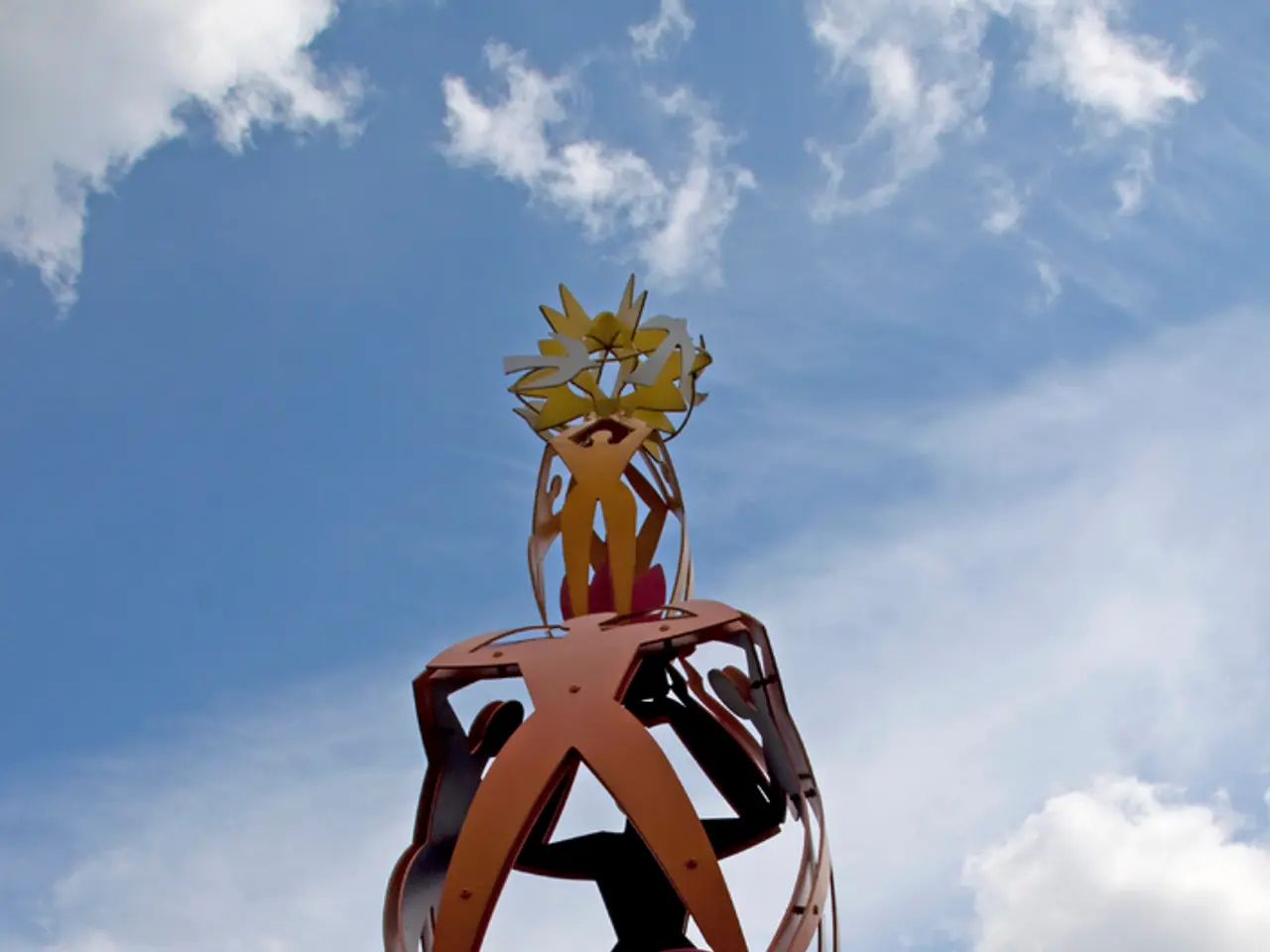Transforming Shari Bonsai for Optimal Aesthetic Appeal
In the world of bonsai, the intentionally created deadwood on trunks, known as shari, serves as a testament to the tree's resilience and wisdom. To effectively design and shape shari to evoke a sense of age, wisdom, and create subtle beauty and quiet contemplation, follow these key principles.
Firstly, carefully carve the deadwood to preserve live veins. This balance emphasizes resilience—life surviving alongside decay. Shape shari with natural irregularities and texture that mimic the weathered scars of old trees in nature, such as rough, cracked bark and softened edges. This subtle ruggedness conveys the passage of time and enhances the impression of great age.
Incorporate aesthetic balance by working with branch and trunk movement. Position shari in ways that harmonize with the tree’s overall flow, creating visual focal points without overwhelming the living parts. Use asymmetry and selective removal of bark to expose inner wood selectively, providing contrast that invites quiet contemplation by highlighting life-and-death duality.
Consider the bonsai’s pot and display angle so that the shari sections catch light and shadow to enhance texture and depth, drawing viewers’ eyes in a reflective way. Complement shari with the overall style and branch structure to maintain a narrative of survival and endurance. Shari combined with jin (dead branches) and well-structured live branches evokes a story of life’s challenges and triumphs.
Advanced shaping techniques can transform exposed wood into a work of art, imbuing the miniature tree with nuanced character and emotional depth. Layering and stacking, carving and sculpting, burning and charring, and integrating natural imperfections are examples of such techniques. These can create complex, visually striking features that evoke a sense of wonder and awe.
Sealing or protecting shari with a suitable wood preservative or sealant is essential to maintain its aesthetic appeal and prevent damage. Shari can be used to hide flaws in the bonsai's trunk or branches, but it's vital to strike a balance, ensuring the exposed wood doesn't overpower the overall composition, and instead, harmoniously integrates with the bonsai’s natural beauty.
By thoughtfully incorporating shari into the bonsai design, practitioners can evoke a sense of timelessness, as if the tree has weathered the seasons and stands as a monument to the passage of time. Shari can create a sense of age and wisdom in bonsai, evoking a sense of history and character. Varying textures within the shari can add depth and visual interest, simulating the natural weathering process.
Balance shari with foliage and other design elements to create a visually appealing composition. Resist the urge to over-design shari, allowing the tree's natural beauty to shine through. Combining shari with other bonsai techniques, such as carving or scorching, can create a visually striking and harmonious composition, allowing artists to push creative boundaries and enhance their bonsai’s unique character and emotional resonance.
Shari can evoke feelings of empathy, wonder, and awe in the viewer, creating a deeper appreciation for the bonsai as a living, breathing entity. Shari serves as a visual narrative that unfolds, revealing the bonsai’s history and essence, much like the lines on a wise elder’s face. The careful placement of shari can create the illusion of age, suggesting the passage of time and the trials and tribulations that the tree has endured.
Refining shari design involves a meticulous attention to detail, where subtle adjustments to shape, size, and texture can elevate the exposed wood from mere decoration to a masterful expression of bonsai artistry. Serenity, wonder, and nostalgia are examples of emotions that can be evoked through shari design. Through the artful design of shari, a bonsai can transcend its physical form, becoming a poignant symbol of the human experience.
In conclusion, shari design is a crucial aspect of bonsai artistry, allowing practitioners to create miniature trees that not only captivate the eye but also stir the soul. By following these principles and embracing advanced shaping techniques, one can craft a visual narrative that forges a profound emotional connection between the viewer and the tree, transcending mere aesthetics and speaking to the human experience.
- When designing the shari, mimic the weathered scars of old trees in nature by creating natural irregularities and adding rough, cracked bark and softened edges, thereby enhancing the impression of great age and simulating the natural weathering process in the 'home-and-garden' and 'gardening' context.
- To complement the bonsai's overall style and evoke a sense of life's challenges and triumphs, combine shari with jin (dead branches) and well-structured live branches, and balance shari with foliage and other design elements to create a visually appealing composition, thus reflecting a diverse 'lifestyle' narrative that resonates with viewers emotionally.




